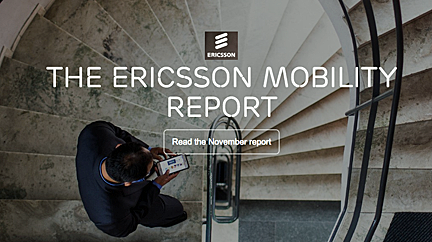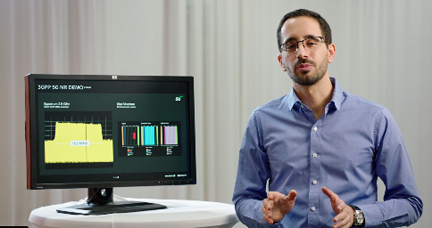
An important technology milestone based on the newly-approved NSA 5G NR standard has been achieved by a group of leading mobile communications companies.

Ericsson (NASDAQ: ERIC) and Qualcomm Technologies, Inc., a subsidiary of Qualcomm Incorporated (NASDAQ: QCOM), in collaboration with AT&T, NTT DOCOMO, Orange, SK Telecom, Sprint, Telstra, T-Mobile US, Verizon, and Vodafone, showcased 3GPP-compliant 5G NR multi-vendor interoperability during live demonstrations held in both the Ericsson Lab in Kista, Sweden, and the Qualcomm Research lab in New Jersey, USA.
The successful demonstrations show the companies’ combined strength in carrying out timely trials that pave the way for commercial launches of 5G standard-compliant infrastructure and devices. Ericsson’s 5G NR pre-commercial base stations and Qualcomm Technologies’ 5G NR UE prototypes will enable operators to conduct live tests in their own networks.
The over-the-air Interoperability Development Testing (IODT) was conducted for lower layer data connections operating at both 3.5 GHz and 28 GHz bands. These just standardized layers are the fundamental building blocks of 5G NR. NSA 5G NR will use the existing LTE radio and evolved packet core network as an anchor for mobility management and coverage while adding a new 5G NR radio access carrier to enable certain 5G use cases starting in 2019.
Fredrik Jejdling, Executive Vice President and Head of Business Area Networks at Ericsson, stated that this milestone builds on years of researching and developing 5G technology, as well as on leading and contributing to the standardization work. By working closely with key partners in early trials and fine-tuning the company's global portfolio, Ericsson ensures that the standard-compliant technology can be brought the firm's customers as well as their customers.
Cristiano Amon, Executive Vice President, Qualcomm Technologies, Inc., added that achieving multi-vendor interoperability based on the global 5G NR standard is a true testament to the company's continued 5G leadership, delivering fundamental contributions to the 3GPP standard and driving toward the launch of standard-compliant commercial networks and devices starting in 2019.
The IODT test complies with the following key characteristics of the 3GPP 5G NR specifications:
- Waveform: flexible OFDM, Orthogonal Frequency Division Multiplexing, waveform numerologies supporting low-band, as well as mid-band and high-band spectrum allocations for wideband operation and low latency services.
- Dynamic, slot-based frame structure: enables future-proof and ultra-lean design as well as self-contained subframe structure that allows for data transmissions that efficiently support diverse use cases with requirements that include low latency, high peak-rate, and high reliability.
- Massive MIMO: control and data channel support for Massive MIMO features based on beam-centric design that improve spectral efficiency and achieve higher data rates, boosting performance for consumers.
- Mobile mmWave: control and data channel support for adaptive beamforming and beam-tracking techniques to enable use of high-band mmWave spectrum that deliver extreme data rates and capacity in a mobile environment.
- Channel codecs: channel coding schemes based on latest technology in advanced low-density parity-check (LDPC) codes to support large data blocks and extreme peak rates, and Polar codes for reliable control channels.

At Mobile World Congress 2017, global industry leaders pledged to accelerate 5G NR for large-scale trials and deployments. This was followed by 3GPP approval in March of a work plan to speed up the development of NSA 5G NR specifications by six months and this week approved as a standard at the 3GPP RAN Plenary Meeting in Lisbon, Portugal. This will aid meeting the increasing connectivity requirements for enhanced mobile broadband services, as evidenced in the latest Ericsson Mobility Report.


